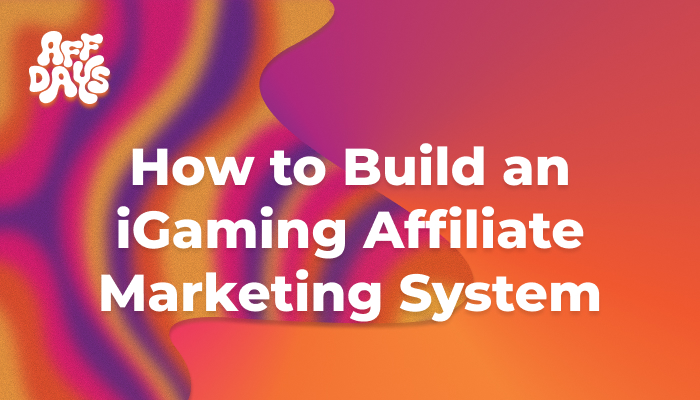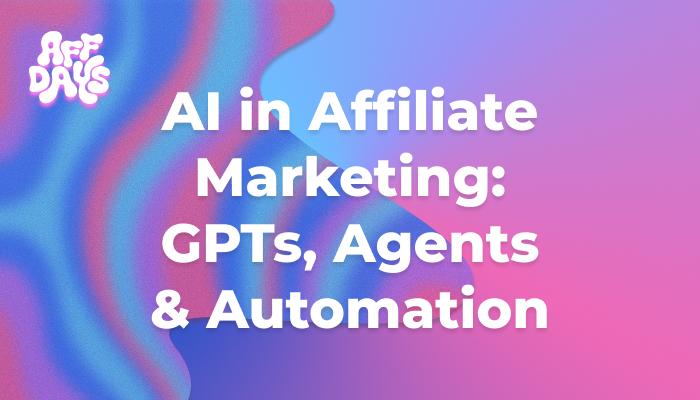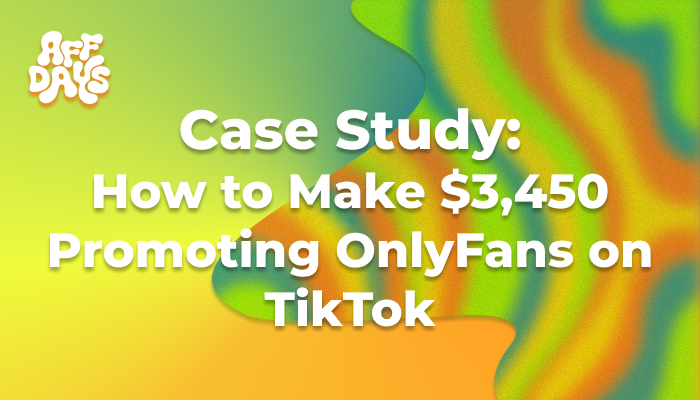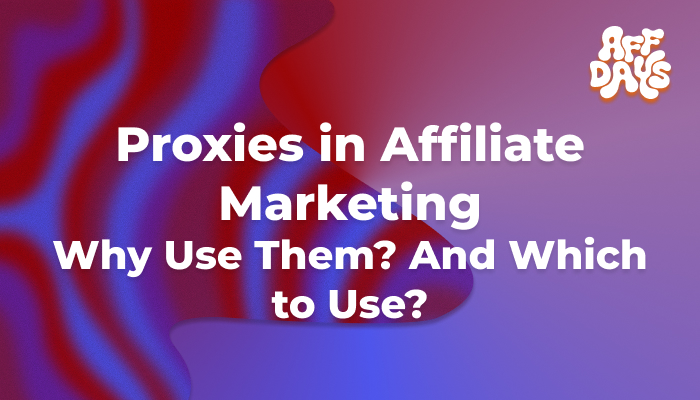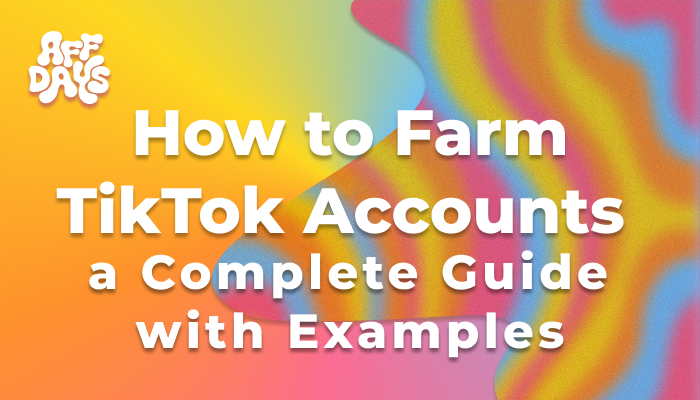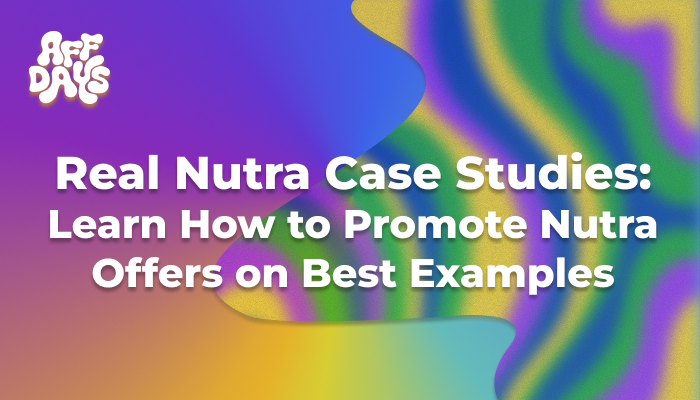Is affiliate marketing legit or scam? That’s the question many beginners ask. In short, no it is not.
Considering the United States has around 11,400 affiliate programs, it’s no wonder the global affiliate marketing industry is expected to reach $27 billion by 2027. Affiliates (partners) make $87.622 on average per year, and this revenue is totally legal, although there may be cases when it is not.
We gathered everything you need to know in this guide.
- What Affiliate Marketing Actually Is
- Why Some People Think It’s a Scam
- Affiliate Marketing vs Pyramid Scheme
- Affiliate Programs Don’t Require Payment to Join
- It Is Not a Get-Rich-Quick Scheme
- Real Scams Around Affiliate Marketing
- Real-Life Scams Examples
- Red Flags: How to Spot a Scam Program
- Successful Strategies
- Choosing the Right Products and Services
- Create Content That Actually Sells
- Use Multiple Marketing Channels
- Stay Transparent and Compliant
- Keep Offers and Promotions Up to Date
- Build Relationships with Merchants
- Use Tools to Scale and Stay Organized
- Case Studies of Successful Partnerships
- Examples of Merchants Benefiting from Partnership Promotion
- Profiles of Successful Affiliates
- Conclusion
What Affiliate Marketing Actually Is
Affiliate marketing is a performance-based activity where you receive a commission for promoting the products or services of other companies using an affiliate link.
This helps businesses do the following:
- Increase sales;
- Attract traffic;
- Improve awareness;
- Connect with their subscribers.
For example, a dietary supplements company could partner with a fitness blogger on Instagram to promote its products to a fitness-oriented audience. The blogger shares a link to the company’s products in their stories and helps the company generate more sales. And, of course, the blogger gets rewarded.
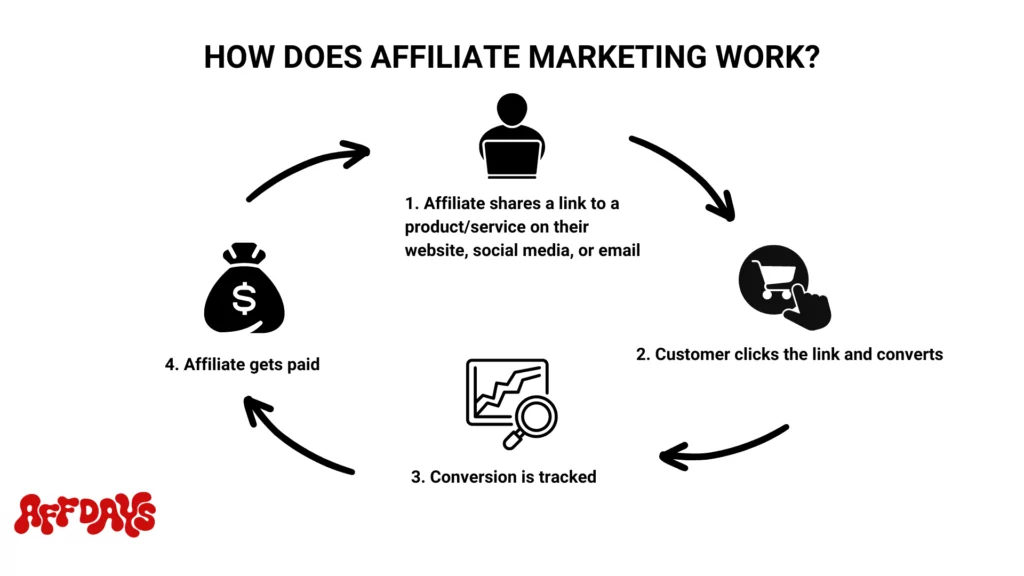
What typically is an incentivizer are commissions with a certain percentage of each sale, free products and samples, exclusive rewards, and more.
Why Some People Think It’s a Scam
Affiliate marketing is real and it can be very profitable. Many global corporations like Amazon and AliExpress have programs that help content creators, publishers, and bloggers earn commissions on sales made by their followers. But a lot of people still mistake it for some illegal schemes. We gathered the most common misconceptions about this way of making money.
Affiliate Marketing vs Pyramid Scheme
Some people consider this industry and financial pyramids to be the same thing. That’s not right.
An affiliate program is free to join, pays a certain commission for a completed action, and mostly focuses on selling products and services. Pyramid schemes are the opposite — they charge an entry fee and focus on earning through referred users.
| Feature | Affiliate Marketing | Pyramid Schemes |
| Primary focus | Selling products and services | Recruiting new members |
| Revenue source | % from actual sales | % from fees paid by recruited members |
| Cost to join | Free | Not free |
| Earning method | Based on performance: sales, sign-ups, etc. | Fees from recruited members |
| Legal status | Legal and widely accepted | Illegal and unethical |
| Risk level | Low risks: you don’t lose anything | High risks: it might not pay off |
Affiliate Programs Don’t Require Payment to Join
Real affiliate programs are free and don’t charge anything to join. You are an essential part of their marketing strategy, so they are happy to have you on board to help them increase sales. Pay-to-join programs are scams in 99% of cases.
A program is fake if it:
- Is not listed on our best programs & networks for 2025.
- Requires payment for you to join.
- Promises and guarantees excessive profits.
- Has a complicated payment structure.
- Lacks reviews online.
It Is Not a Get-Rich-Quick Scheme
If someone guarantees you a fast and immediate profit, then they’re likely trying to scam you. It requires effort, skills in product promotion, and an audience that will buy from your links. It’s a long-term strategy that doesn’t guarantee income beacuse you need to make sure that you target the right audience. For example, if you work in the dating niche, targeting female audiences has its own features.
Real Scams Around Affiliate Marketing
Just like in any other sphere of online business, scams can take place here as well. Which is why you must first know the most common schemes to avoid losing your money. We gathered the largest fraudulent schemes in this industry:
- Pyramid schemes: they prioritize recruiting more partners over actual sales, generating revenue from entry fees. A legitimate business prioritizes sales and is free to join;
- Fake products: there are shady niches like Adult or iGaming that actually work, but there also are companies that promote fake and unrealistic goods.
- Get-rich-quick schemes: they promise to bring you a lot of money with almost no effort.
- Pay-to-join schemes: they charge a fee for you to join. Any reputable program is free to join and may even have some initial audience requirements;
- Fake courses: this involves promoting courses and gurus. Refunds are usually impossible, and the so-called gurus have no proof that their methods work.
There are certain red flags that you should look out for, too. We’ll describe them in the next section.
Real-Life Scams Examples
The Internet is full of case studies covering frauds and their schemes:
- My Online Business Education (MOBE): this was a get-rich-scheme that promised to teach people how to make a living on affiliate marketing. They charged thousands of dollars for different membership levels, ending up scamming people for $125 million. Fortunately, the Federal Trade Commission closed down this company and shared a detailed case study.
- Empower Network: this was a pyramid scheme that charged $25 from each member to get a copied website on Empower Network’s domain. The goal was to get an unbeatable search ranking success by getting more people into the scheme. However, the domain faced penalties and soon declared bankruptcy.
- StealthGenie: this was a spyware application that promised high payments and low competition. Such software violates federal wiretap laws, and promoting it can lead to severe consequences. The FBI shut down the app’s website, arrested its CEO, and charged a $500,000 fine.
As you can see, it’s not only about money. Working with scammers can also seriously damage your reputation.
Red Flags: How to Spot a Scam Program
Almost all illegal practices have similar features. So if you know them, you can easily identify and avoid them. We gathered the most popular red flags based on experience and reports from other users:
- Guaranteed high income: affiliate marketing does not guarantee income;
- Minimum effort: it requires great effort, a well-made strategy, and an audience to succeed;
- Unrealistic claims: if the company promises instant solutions or miraculous results, it’s fake;
- Limited information: legitimate companies provide extensive information and user reviews;
- Fees to join: you shouldn’t pay anything to join a real affiliate program;
- Limited payout information: there is no clear info on payouts, their frequency, and used systems.
Successful Strategies
If you start working with a reliable program, you’ll have to follow proper strategies. That’s why we gathered a step-by-step guide with the best approaches.
Choosing the Right Products and Services
The first step is to decide what you will promote. It’s your direct key to success, so you’ll have to consider:
- Niche: align the promotion with your website’s or account’s topics;
- Quality: make sure your followers are satisfied with the quality. Your reputation is at stake;
- Demand: research demand using Google Trends or polls on social media.
You might want to check out different programs to find a relevant offer. You can partner with networks, but many companies and brands often have their own programs. For example, there is an official program from Adidas.
Create Content That Actually Sells
The next step is to create content that promotes the offer. It should be high-quality, because otherwise people won’t consume it and thus won’t buy what you promote. You’ll need to:
- Use different formats: combine blog posts, social media publications, stories, and other formats. This will ensure cross-channel engagement of all your followers;
- Educational materials: using tutorials, how-to guides, and short videos is an organic way to promote your offer. It’s an easy way to add more brand mentions and links too;
- Reviews and comparisons: compare different items of the same category and share your opinion with your followers;
- Storytelling: incorporating storytelling is the best way to create an emotional connection with your viewers;
- High-quality visuals: photos and videos are a great way to make a promotion and share its benefits. Combine them with a powerful text will help you create an image in the user’s head, prompting them to want to buy the item.
Sometimes companies will provide you with pre-made promo materials. You can use them, too.
Use Multiple Marketing Channels
Focusing on a single channel cuts your reach. You always need as much audience as possible. That’s why you need to:
- Use social media: share your promotion on Instagram, Facebook, Twitter, and all other platforms you use to cover all your subscribers;
- Use content marketing: make searh engine optimized pages on your website, publish demonstrations on YouTube, and mention the promotion in podcasts on relevant topics;
- Use paid advertising: some people use Google Ads and targeted social media ads to cover customers with specific interests and demographics;
- Use forums: users often ask questions on forums. If your offer can help them solve their problems, you can integrate a link in your reply.
Previously, we covered the best places to promote links. Make sure to check them if you’re new to our industry.
Stay Transparent and Compliant
In a perfect world, promotions should be transparent and honest. This includes:
- Affiliate disclosure: the Federal Trade Commission obliges American citizens to indicate partnerships and promotions. The same requirements are stated by the European Commission for Europeans;
- Accurate descriptions: descriptions shold be precise but not exaggerating the benefits and capabilities;
- Feedback and reviews: it’s better to share both positive and negative aspects.
Most countries also require you to create a privacy policy when processing user data. This is mostly relevant when you ask them to fill out forms or buy from your website. If that’s your case, you can use a free privacy policy generator.
Keep Offers and Promotions Up to Date
Your niche isn’t the only factor to consider when making a promotion. Don’t forget about other factors like the season, current trends. For instance, you wouldn’t sell skiing equipment in summer. There simply wouldn’t be any demand.
Also, remove links to outdated promotions. Influencers often use resources like Linktree to keep their promotions available for a while in their bio. Keep only up-to-date offers to avoid confusion.
Build Relationships with Merchants
If you communicate with merchants you partner with, you can get exclusive offers and increased rewards. So you’d better establish a friendly relationship with them. This will make the collaboration work out perfectly for both of you.
By the way, the most popular affiliate merchants are Amazon Associates, eBay Partner Network, Rakuten Advertising, and Fiverr.
Don’t forget to be polite, timely, and respectful when communicating with merchant’s representatives. People pay attention to it.
Use Tools to Scale and Stay Organized
All partners use tools to track the performance of their campaigns. There are different ones for each purpose but generally speaking they are:
- Google Analytics to track website traffic and user behavior;
- Buffer to schedule publications across different channels;
- Canva to create user-friendly graphic designs;
- Trello to organize tasks and promotions;
- Mailchimp to create and track email campaigns;
- Unbounce to optimize landing pages.
Case Studies of Successful Partnerships
Take a look at these case studies to show you the possibilities of this industry.
Examples of Merchants Benefiting from Partnership Promotion
- Wirecutter is the world’s largest affiliate marketing success story. It focuses on reviews with real tests, and each listing includes a link. The project’s success led to the creation of the term “Wirecutter effect”. It also attracted The New York Times, which purchased the web page for $30 million in 2016. Wirecutter generated $20 million in 2018 and had over 12 million organic search clicks in May 2022, so it’s definite proof of profitability.
- ScrapingBee, a web scraping API service, recruited partners who would promote their SaaS app. The team scraped a list of similar software, found all companies with affiliate programs, and analyzed their backlink placement. Then they reached out to all the blogs with backlinks, offering them to become ScrapingBee’s affiliates with a 25% lifetime reward. The team received a 50% response rate and currently receive 10% of their current customers.
- Tomahawk Shades, an eyewear brand, partnered with the AWIN network and recruited multiple publishers. They launched a campaign from August 13 to August 25 in 2020 to test this approach. It attracted 730 new users, made 28 transactions, and generated $1,068 in revenue. This was 27.71% of the company’s total income during the period.
- Currys, a leading UK retailer of technology products, collaborated with BrandSwap and Awin to introduce a new post-purchase rewards program ahead of Black Friday. The goal was to create a new revenue stream by offering non-endemic advertiser rewards, like meal kit subscriptions for appliance purchasers, on the order confirmation page. This integration into Currys’ existing retail strategy led to an average CPM of $77, a peak of $89, and a CTR of 10%. These results exceed industry benchmarks.
Profiles of Successful Affiliates
- Pat Flynn is a successful marketer and entrepreneur with 16+ years of experience in the industry. He shares tips on earning money with marketing and other approaches on his YouTube channel;
- Geno Prussakov founded AM Navigator and worked with many companies like Forbes, Nokia, Warner Music, Skype, and others. He and his team share many insights on their company’s blog;
- Matt Giovanisci is also the founder of Money Lab, a site where he shares all his tips and insights. Matt’s content is useful for both beginners and professionals.
If you have not chosen a GEO to work with, we recommend reading our article about Sri Lanka. It is a good country to start with.
Conclusion
Affiliate marketing is a legitimate business model, but it’s surrounded by scams that imitate it. Real programs are free to join, tied to actual products, and pay only for real performance. The scams are the ones that charge fees, guarantee income, or hide how payouts work. Choose reputable programs, verify every offer, and rely on evidence — not promises — to avoid being misled.

Ksenia has extensive hands-on experience in affiliate marketing, having worked as a media buyer and affiliate for several years across multiple verticals. Throughout her career, she managed traffic from a wide range of sources, tested funnels, and collaborated directly with advertisers and networks.
For the past six years, she has also been writing in-depth articles, reviews, and analytical guides about affiliate marketing. Her work has appeared on well-known industry blogs and platforms, where she covers topics such as traffic sources, compliance, creatives, tracking, and campaign optimization.
Today, Ksenia combines practical experience with editorial expertise, contributing as a guest expert to various affiliate marketing projects and helping educate both beginners and experienced affiliates.







